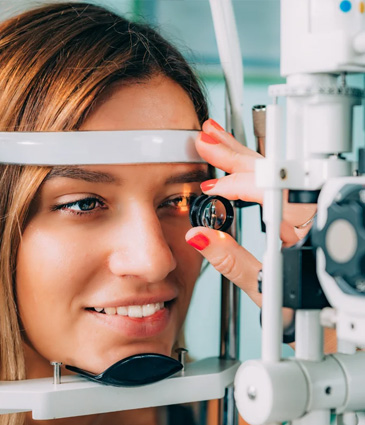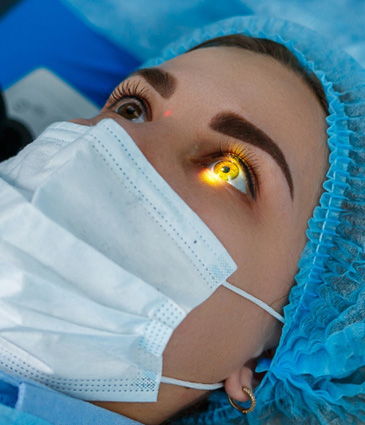
What is Strabismus?
Strabismus, also known to many as crossed eyes, occurs when your eyes don’t align properly. In this condition, one eye may look in a different direction than the other. Typically, six muscles work in harmony to control eye movement and keep both eyes aligned. When these muscles fail to coordinate, it results in strabismus, disrupting normal eye positioning. Although strabismus is most commonly diagnosed in children, adults can develop it too. In adults, it is often linked to underlying causes such as strokes or physical trauma. Additionally, some adults may have untreated childhood strabismus, or it could recur or worsen after initial treatment. Although this disorder can impair vision and quality of life, its effects can be managed with prompt diagnosis and suitable therapy.
What Causes Strabismus?
The main cause of strabismus is an imbalance in the eye muscles, which control the movement and coordination of the eyes. These muscles must work together for proper alignment and focus. When they don’t, one eye may drift. Common causes include:
- Genetics: A family history of strabismus or crossed eyes can increase the likelihood.
- Neurological issues: Conditions affecting the brain can disrupt eye muscle coordination.
- Refractive errors: Severe nearsightedness or farsightedness may lead to strabismus.
- Trauma: Injuries to the head or eyes can also cause misalignment.
What are the kinds of Strabismus
There are various types of strabismus depending on the direction of the misalignment:
- Esotropia: The eye turns inward.
- Exotropia: The eye turns outward.
- Hypertropia: The eye turns upward.
- Hypotropia: The eye turns downward.
The severity and frequency of misalignment can vary. Some people may experience it only when they’re tired or focusing on close objects, while others may have constant misalignment.
Symptoms of Strabismus
The most noticeable symptom is the visible misalignment of the eyes. Other symptoms can include:
- Double vision
- Difficulty focusing or reading
- Eye strain and headaches
- Poor depth perception
- Frequent squinting or closing one eye
In children, strabismus may lead to amblyopia (lazy eye), this is when the brain ignores signals from the misaligned eye. This can cause long-term vision problems if not treated early.
Diagnosing Strabismus
Diagnosing strabismus involves a comprehensive eye exam conducted by an ophthalmologist. The doctor will evaluate eye alignment, movement, and focus. These tests might include:
- Visual acuity test: to examine the sharpness of vision.
- Corneal light reflex test: to check for misalignment.
- Cover test: to look at eye movement and alignment.
Early diagnosis is crucial, especially in children, to prevent complications like amblyopia.
Treatment Options for Strabismus
The aim of treatment is to improve eye alignment, coordination, and vision. Depending on the seriousness and cause, treatment options include:
- Glasses or Contact Lenses: These are used if refractive errors like farsightedness or nearsightedness are contributing to the condition.
- Eye Patching: Covering the stronger eye forces the weaker eye to work harder, strengthening its muscles and improving coordination.
- Vision Therapy: Eye exercises designed to improve focus and coordination.
- Botox Injections: Temporarily paralyzing certain eye muscles to improve alignment.
- Surgery: In cases where non-surgical options are ineffective, surgery may be necessary to adjust the eye muscles.
Strabismus in Adults
While strabismus is often associated with children, adults can also develop it due to neurological conditions, trauma, or untreated childhood strabismus. Treatment in adults may involve similar methods, but the approach is often tailored to address the underlying cause.
How Much Does Strabismus Treatment Cost in Turkey?
The cost in Turkey for strabismus treatment is competitive and includes high-quality care. At Istanbul Med Assist, we provide transparent pricing and personalized treatment plans to suit each patient’s needs. Whether you need glasses, therapy, or surgery, you’ll find affordable and reliable options with us.
To Conclude
Strabismus is more than a cosmetic concern it can affect your vision and confidence. With timely diagnosis and treatment, it’s possible to correct eye misalignment and improve overall quality of life. At Istanbul Med Assist, we’re here to guide you every step of the way, offering affordable and effective solutions.







